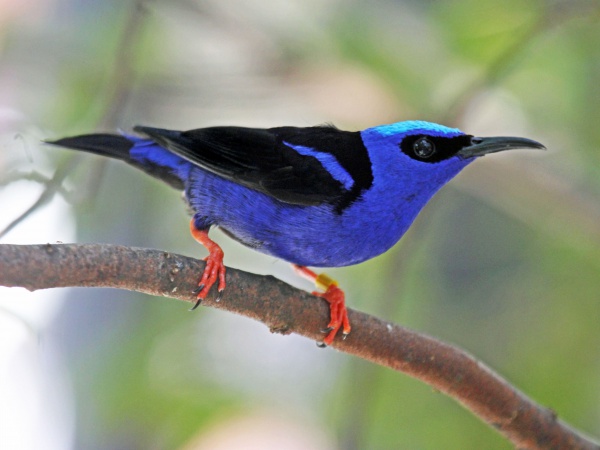Facts About Red-legged honeycreeper
The red-legged honeycreeper is an enchanting small songbird from the tanager family. These birds inhabit tropical regions extending from southern Mexico to Peru, Bolivia, central Brazil, Trinidad and Tobago, and possibly even Cuba.
The males are particularly eye-catching with their violet-blue plumage, black wings, tail, and back, bright red legs, and a striking turquoise crown. After the breeding season, males molt into a more subdued greenish coloration. In contrast, females and juveniles are predominantly green with lighter undersides. Their call is a thin, high-pitched "tsip."
These birds favor forest edges, open woodlands, and plantations, often appearing in small groups. Their diet includes insects, fruit, and nectar. Remarkably, they respond to the call of the ferruginous pygmy owl.
For nesting, the female constructs a small cup-shaped nest in a tree. She lays two white eggs blotched with brown and incubates them for about 12-13 days. After hatching, she tends to the chicks for an additional 14 days until they are ready to fledge.
The red-legged honeycreeper is relatively common and is not considered threatened by the IUCN. There are various subspecies with minor differences among them. Additionally, there is a similar bird in Venezuela, known as the purplish honeycreeper, which may be a hybrid. Interestingly, a specimen found in Colombia was noted to be free of blood parasites.

 Guatemala
Guatemala